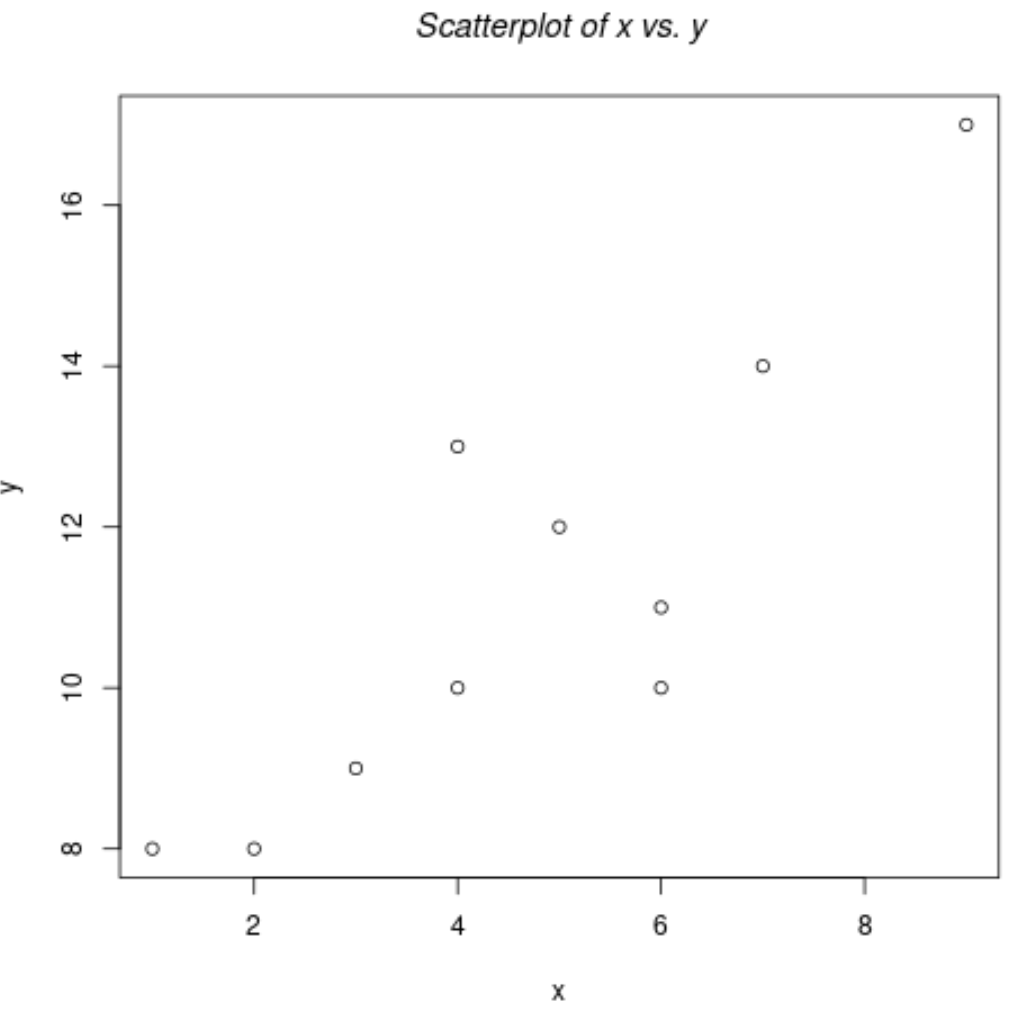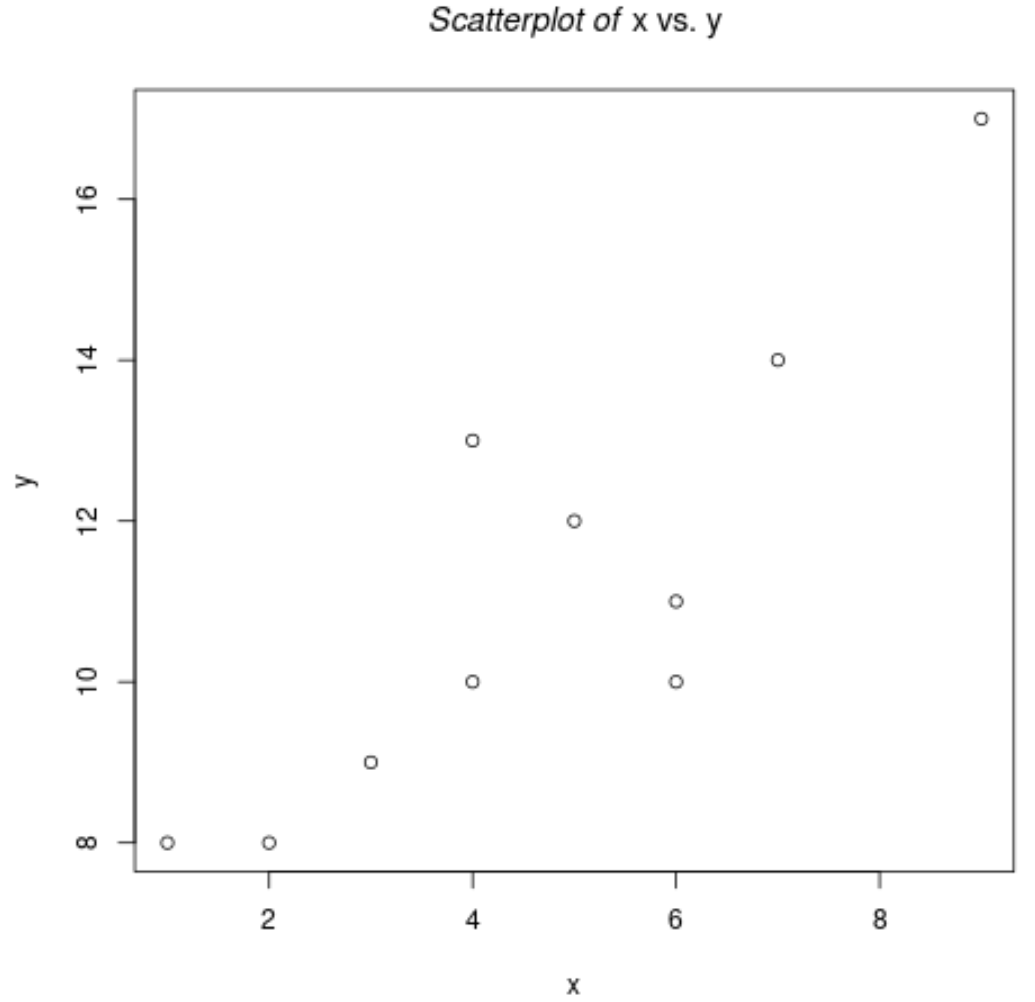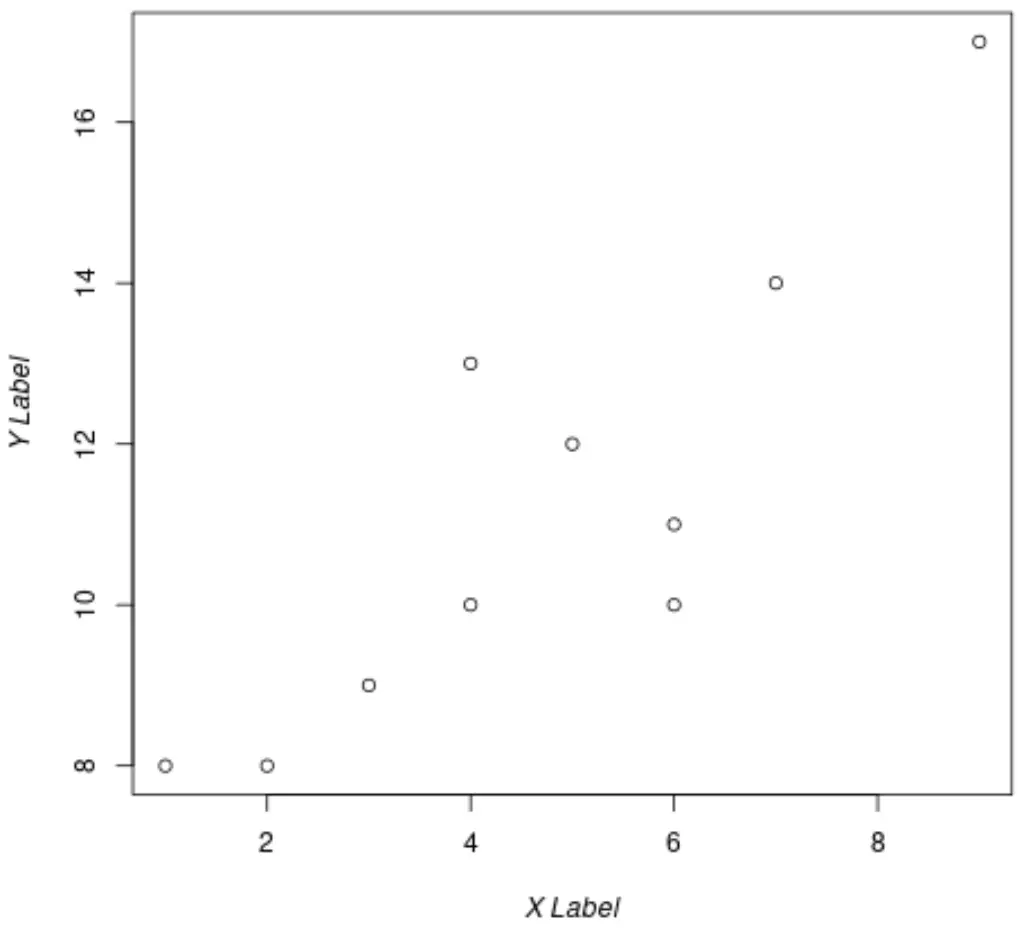วิธีใช้แบบอักษรตัวเอียงใน r (พร้อมตัวอย่าง)
คุณสามารถใช้ไวยากรณ์พื้นฐานต่อไปนี้เพื่อสร้างแบบอักษรตัวเอียงในแปลง R:
substitute(paste(italic(' this text is italic ')))
ตัวอย่างต่อไปนี้แสดงวิธีใช้ไวยากรณ์นี้ในทางปฏิบัติ
ตัวอย่างที่ 1: แบบอักษรตัวเอียงในชื่อเรื่องพล็อต
รหัสต่อไปนี้แสดงวิธีการใช้แบบอักษรตัวเอียงในชื่อเรื่องของพล็อตใน R:
#define data x <- c(1, 2, 3, 4, 4, 5, 6, 6, 7, 9) y <- c(8, 8, 9, 10, 13, 12, 10, 11, 14, 17) #create scatterplot with title in italics plot(x, y, main = substitute(paste(italic(' Scatterplot of x vs. y '))))

โปรดทราบว่าเราสามารถระบุแบบอักษรตัวเอียงสำหรับคำบางคำในชื่อเรื่องเท่านั้น:
#create scatterplot with only some of title in italics plot(x, y, main = substitute(paste(italic(' Scatterplot of '), ' x vs. y ')))

ตัวอย่างที่ 2: แบบอักษรตัวเอียงบนป้ายแกนพล็อต
รหัสต่อไปนี้แสดงวิธีการระบุแบบอักษรตัวเอียงสำหรับป้ายชื่อแกน X และ Y ของพล็อต:
#define data x <- c(1, 2, 3, 4, 4, 5, 6, 6, 7, 9) y <- c(8, 8, 9, 10, 13, 12, 10, 11, 14, 17) #create scatterplot with axes labels in italics plot(x, y, xlab = substitute(paste(italic(' X Label '))), ylab = substitute(paste(italic(' Y Label '))))

ตัวอย่างที่ 3: แบบอักษรตัวเอียงพร้อมข้อความในเส้นทาง
รหัสต่อไปนี้แสดงวิธีการรวมแบบอักษรตัวเอียงสำหรับองค์ประกอบข้อความภายในเส้นทาง:
#define data x <- c(1, 2, 3, 4, 4, 5, 6, 6, 7, 9) y <- c(8, 8, 9, 10, 13, 12, 10, 11, 14, 17) #create scatterplot plot(x, y) #add italic text at location x=3, y=16 text(3, 16, substitute(paste(italic(' This is some italic text '))))

แหล่งข้อมูลเพิ่มเติม
บทช่วยสอนต่อไปนี้จะอธิบายวิธีการใช้งานฟังก์ชันทั่วไปอื่นๆ ใน R:
วิธีเพิ่มตัวยกและตัวห้อยลงในแปลงใน R
วิธีเปลี่ยนขนาดตัวอักษรใน ggplot2